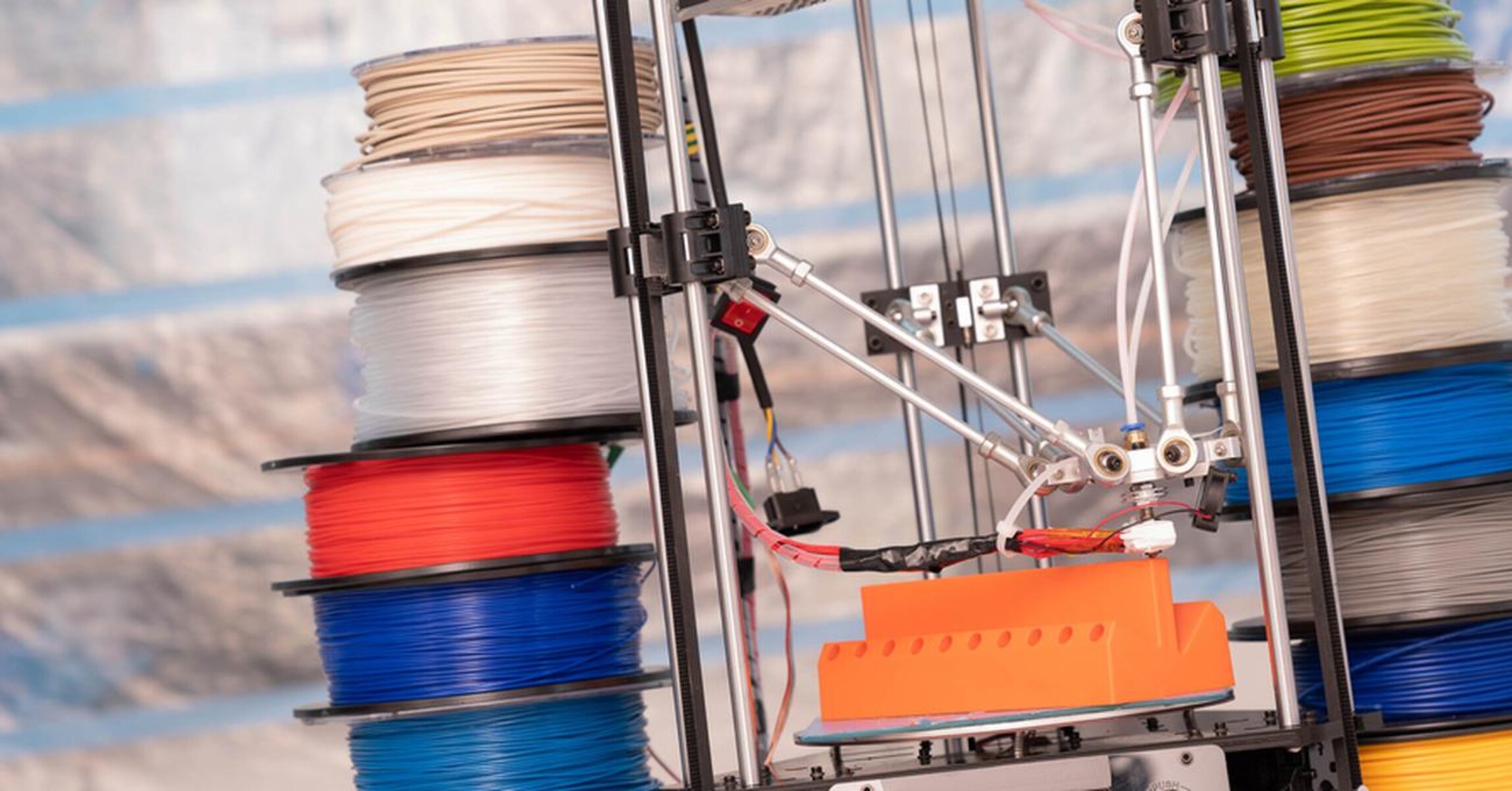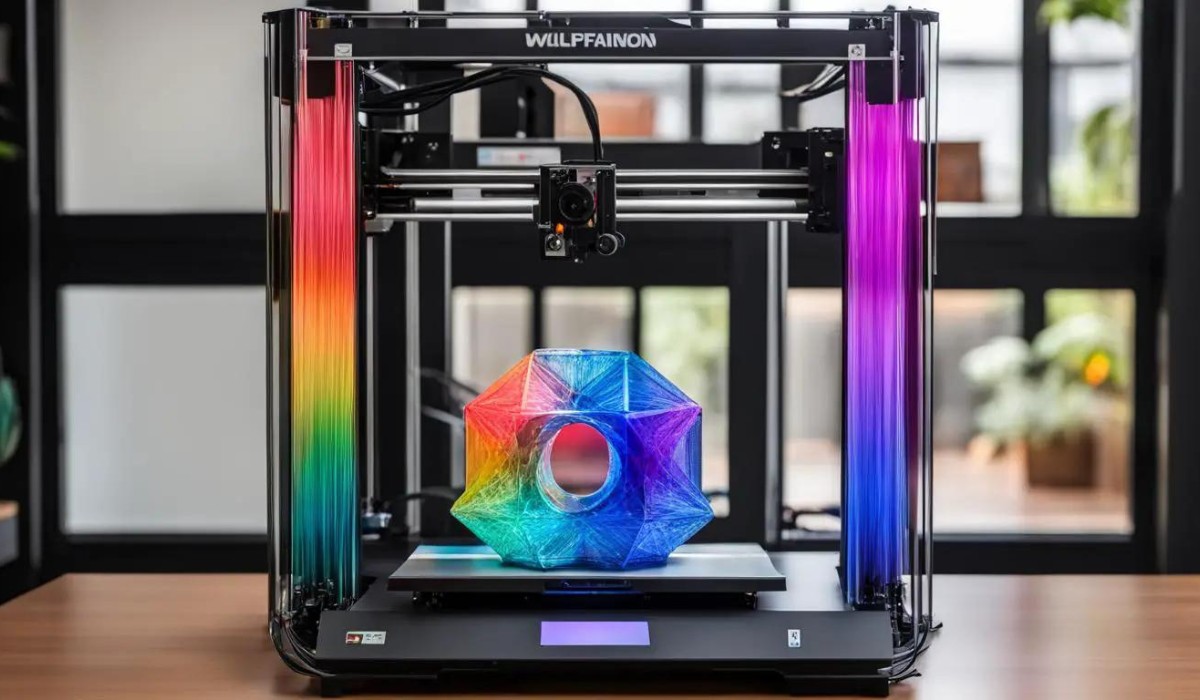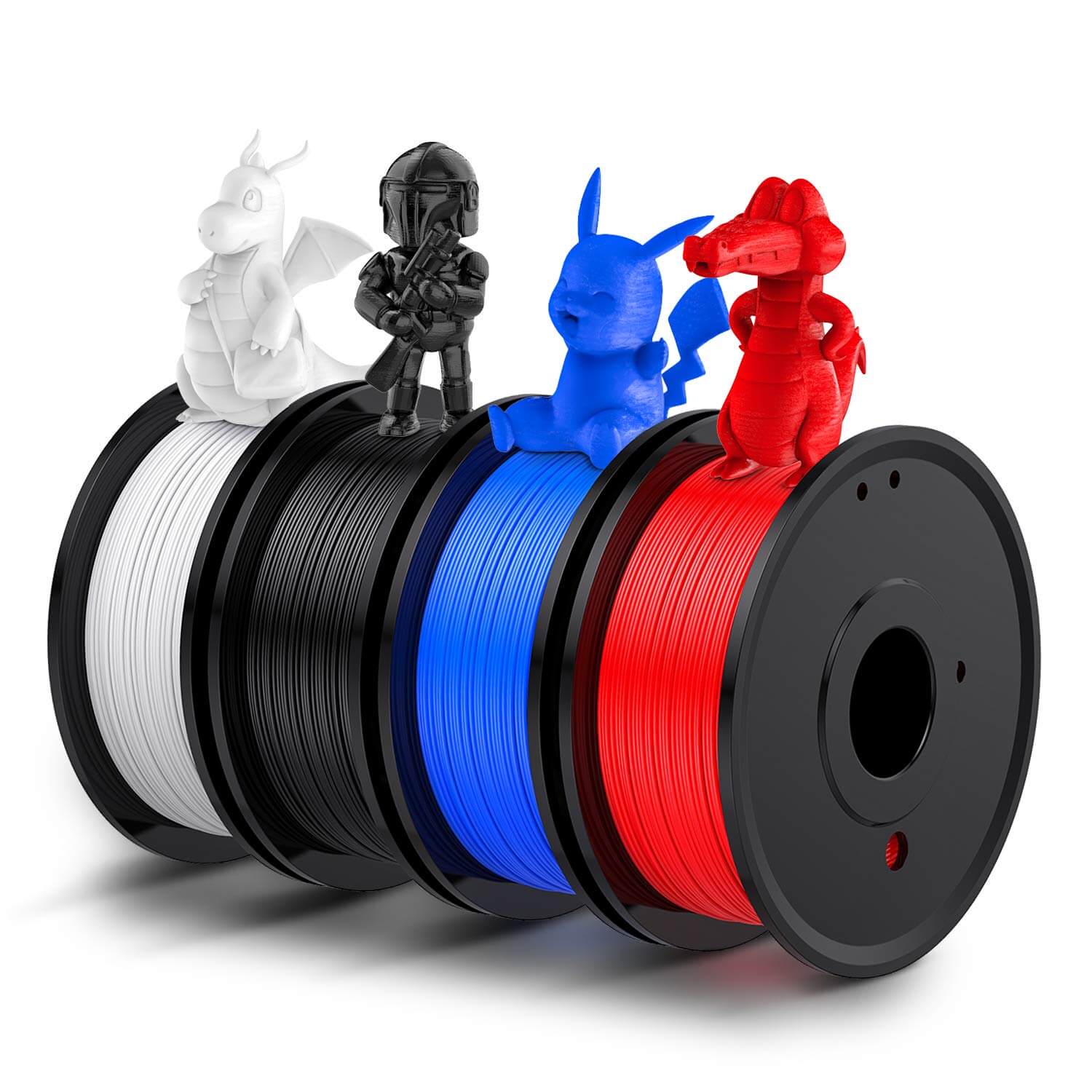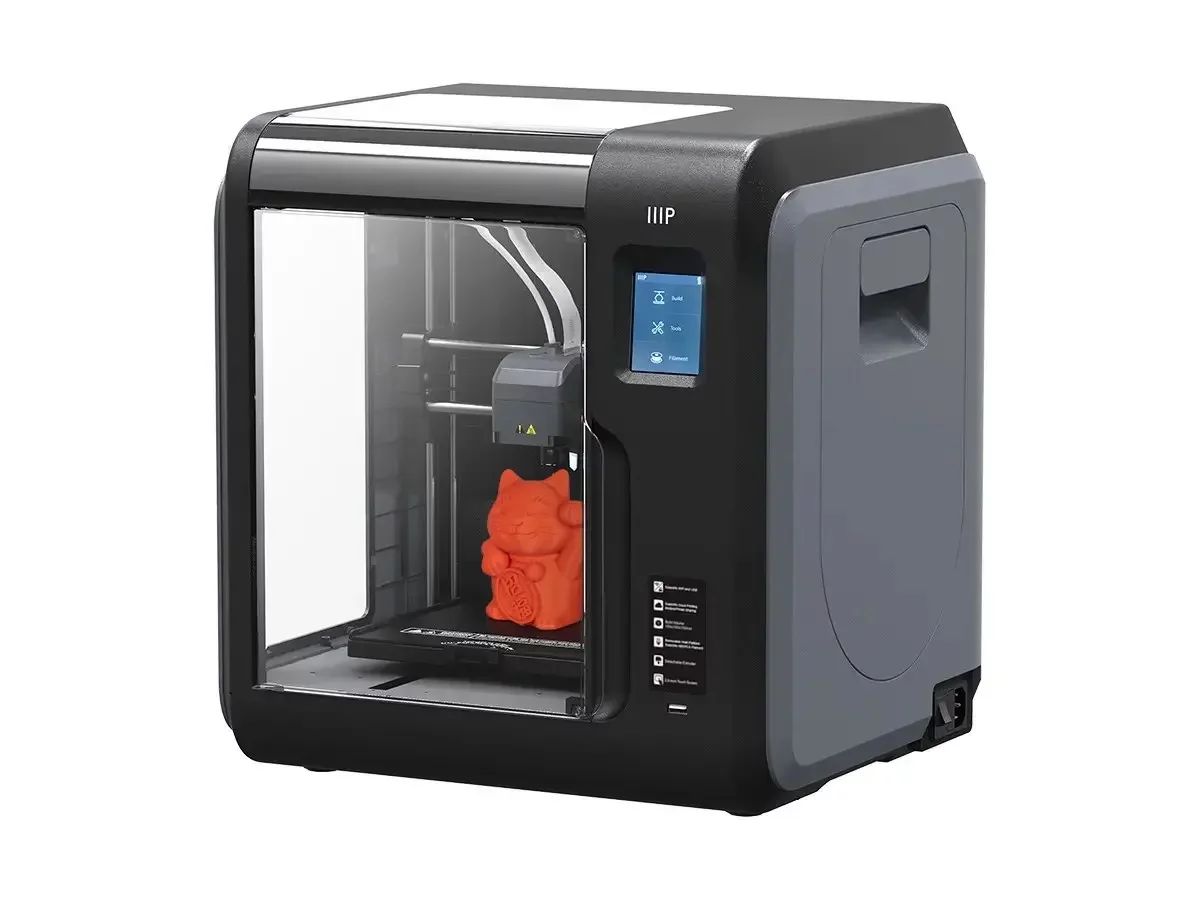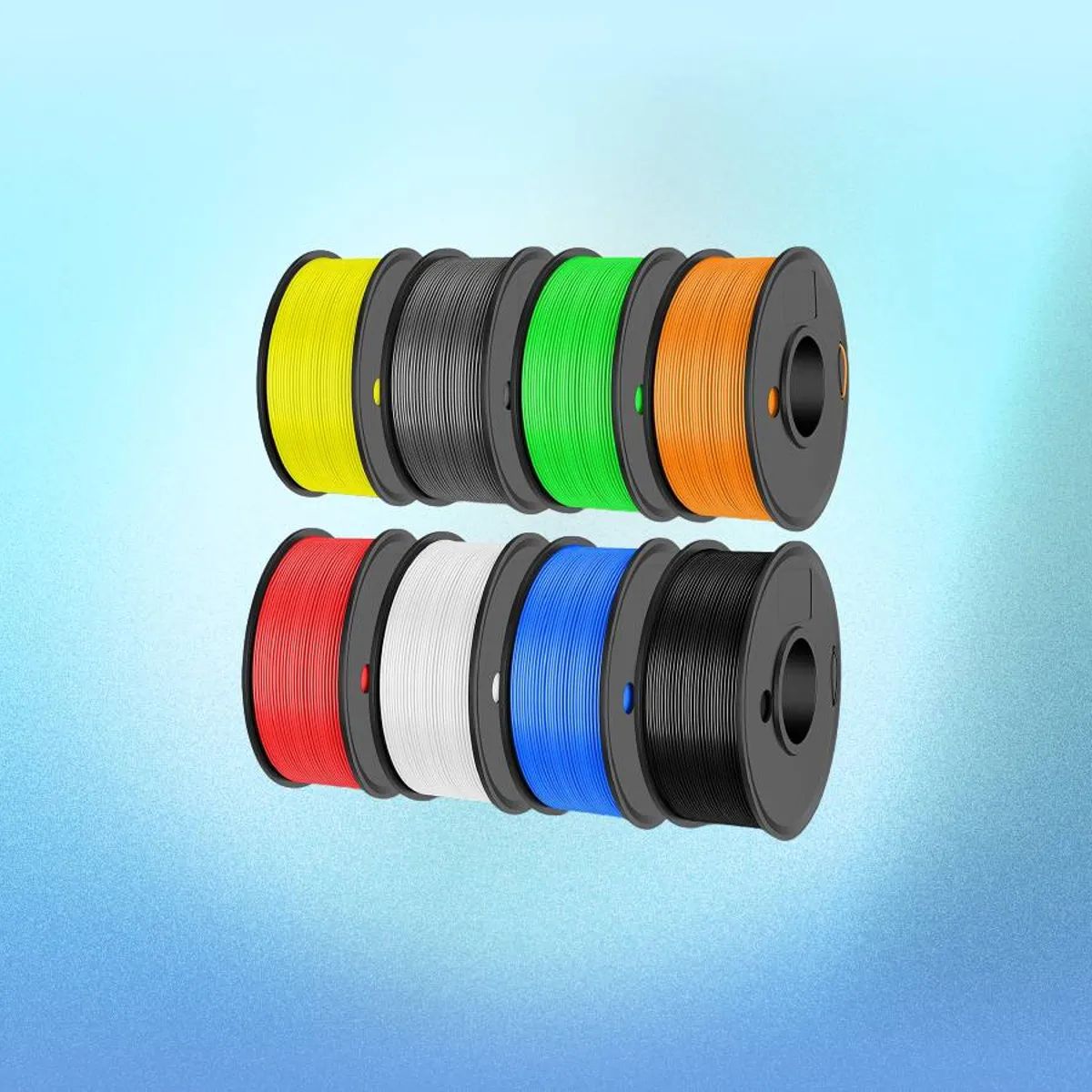Introduction
Welcome to the world of 3D printing, where innovation and creativity come to life. In this article, we will explore one of the most popular materials used in 3D printing: PLA. Whether you’re a beginner or an experienced enthusiast, understanding PLA and its role in the printing process is essential to creating high-quality prints.
PLA stands for Polylactic Acid, a biodegradable thermoplastic derived from natural resources such as corn starch or sugarcane. It has gained significant popularity in recent years due to its ease of use, affordability, and eco-friendly nature. Whether you’re printing small figurines, prototypes, or functional parts, PLA offers a myriad of benefits that make it a top choice among 3D printing enthusiasts.
In this article, we’ll dive deeper into the world of PLA, exploring its manufacturing process, properties, differences from other materials like ABS, common uses, environmental impact, and tips for achieving the best results when printing with PLA.
What Is PLA?
PLA, short for Polylactic Acid, is a type of biodegradable thermoplastic derived from natural resources such as corn starch or sugarcane. It is one of the most commonly used materials in 3D printing due to its ease of use, availability, and environmentally-friendly properties.
PLA is a versatile material that can be used for a wide range of 3D printing applications. It has a low melting point, which makes it easy to print with most desktop 3D printers. PLA filament is available in a variety of colors, allowing for vibrant and visually appealing prints.
One of the key advantages of PLA is its biodegradability. Unlike traditional plastics derived from fossil fuels, PLA is derived from renewable resources and can break down naturally over time. This makes it a more sustainable option for 3D printing and reduces the environmental impact associated with plastic waste.
In addition to its eco-friendly nature, PLA is also known for its low toxicity and odor. It emits minimal harmful fumes during the printing process, making it a safer choice for home and educational environments.
Another notable characteristic of PLA is its rigidity. While it is not as strong as materials like ABS, PLA offers good stiffness and is suitable for many non-functional prototypes, artistic models, and decorative prints. However, it is worth noting that PLA may not be the best choice for parts that require high impact resistance or prolonged exposure to heat.
Overall, PLA is an excellent material for beginners and hobbyists entering the world of 3D printing. Its ease of use, biodegradability, and aesthetic appeal make it a popular choice for a variety of applications. Whether you’re printing toys, household items, or decorative objects, PLA can help you bring your ideas to life with minimal impact on the environment.
PLA Manufacturing Process
The manufacturing process of PLA involves several steps that transform raw materials, such as corn starch or sugarcane, into the final PLA filament used in 3D printing.
1. Extraction of Raw Materials: The process begins with the extraction of starch from corn or sugarcane. The raw materials are harvested and processed to separate the starch component.
2. Fermentation: The extracted starch is then fermented using bacteria or enzymes to convert it into lactic acid, which is a key component of PLA.
3. Polymerization: The lactic acid is further processed using heat and pressure to undergo polymerization. This involves linking the lactic acid molecules together to form long chains, resulting in the formation of polylactic acid or PLA.
4. Filament Extrusion: The PLA is then extruded into filament form. In this process, the molten PLA is passed through a small nozzle and cooled to solidify into a continuous filament. The filament is then wound onto spools, ready to be used in 3D printers.
It’s worth mentioning that PLA manufacturing processes may vary slightly depending on the specific manufacturer or brand. Some manufacturers may also add additives to enhance certain properties of the PLA filament, such as increased strength or improved printability.
Overall, the PLA manufacturing process effectively harnesses renewable resources and utilizes sustainable practices. The resulting PLA filament offers a great combination of usability, aesthetic appeal, and eco-friendliness, making it a favored choice for 3D printing enthusiasts.
Properties of PLA
PLA possesses a unique set of properties that make it an ideal material for a wide range of 3D printing applications. Understanding these properties is essential for achieving successful prints and optimizing design outcomes.
1. Biodegradability: PLA is derived from renewable resources and is biodegradable, meaning it can decompose naturally over time. This makes it a sustainable alternative to traditional plastics, reducing the environmental impact of 3D printed objects.
2. Low Toxicity: PLA is considered a safe material for 3D printing, as it emits minimal toxic fumes during the printing process. This makes it suitable for use in home and educational settings, where ventilation may be limited.
3. Ease of Printing: PLA is known for its easy printing properties. It has a low melting point, which reduces the risks of nozzle clogging and warping. PLA also has good layer adhesion, making it easier to achieve high-quality prints with minimal issues.
4. Aesthetic Appeal: PLA filament is available in a wide range of vibrant colors. It offers excellent surface finish, showcasing intricate details and smooth texture. This makes PLA ideal for producing visually appealing and intricate prints.
5. Stiffness: While PLA is not as strong as some other 3D printing materials like ABS, it offers decent stiffness. This makes it suitable for non-functional prototypes, artistic models, and decorative prints that require rigidity.
6. Limited Heat Resistance: PLA has a lower heat resistance compared to materials like ABS. It can soften and deform when exposed to high temperatures, limiting its use for parts that require prolonged heat resistance.
7. Low Warping: PLA has minimal warping tendencies, which is advantageous for maintaining print accuracy and preventing warping-related defects. It also makes PLA well-suited for larger prints.
8. Limited Impact Resistance: PLA is more brittle compared to materials like ABS. While it can withstand moderate forces, it may break or fracture under high impact conditions.
Understanding the properties of PLA can aid in selecting the right material for your specific 3D printing project. Consider the intended use, design requirements, and environmental factors to leverage the advantages of PLA while minimizing its limitations.
PLA vs ABS
When it comes to 3D printing, PLA and ABS are two of the most widely used materials. Both PLA (Polylactic Acid) and ABS (Acrylonitrile Butadiene Styrene) have unique properties and characteristics that make them suitable for different types of applications. Understanding the differences between PLA and ABS can help you choose the right material for your specific project.
1. Material Composition: PLA is made from renewable resources, such as corn starch or sugarcane, making it environmentally friendly and biodegradable. On the other hand, ABS is a petroleum-based plastic, derived from non-renewable fossil fuels.
2. Printing Ease: PLA is known for its ease of printing. It has a lower printing temperature compared to ABS, which reduces the risk of warping and makes it suitable for most consumer-grade 3D printers. ABS, on the other hand, requires higher printing temperatures and may be more challenging to work with for beginners.
3. Strength and Durability: ABS is generally stronger and more impact-resistant than PLA. It is a preferred choice for functional parts that require durability and flexibility, such as mechanical components or casings. PLA offers decent stiffness but may be more brittle, making it better suited for non-functional prototypes and artistic models.
4. Heat Resistance: ABS has a higher heat resistance compared to PLA. It can withstand higher temperatures before softening or deforming, making it suitable for applications that require exposure to heat or higher ambient temperatures. PLA has a lower heat resistance and can warp or deform under prolonged exposure to elevated temperatures.
5. Odor and Toxicity: ABS emits a noticeable odor while printing, and the fumes may contain toxic chemicals. PLA, on the other hand, has a minimal odor and is considered safe for use in home or educational environments. However, it’s still important to maintain proper ventilation when 3D printing with any material.
6. Post-Processing: PLA is easier to post-process compared to ABS. It can be sanded, painted, or smoothed with acetone vapor without any significant issues. ABS, on the other hand, requires more specialized techniques like acetone vapor smoothing to achieve a smooth surface finish.
Ultimately, the choice between PLA and ABS depends on the specific requirements of your 3D printing project. If you’re looking for an environmentally friendly and easy-to-print material for non-functional prototypes or artistic models, PLA is a great choice. However, if you need durability, heat resistance, or flexibility for functional parts, ABS may be the better option.
Common Uses of PLA
PLA, or Polylactic Acid, is a versatile material that finds numerous applications in the world of 3D printing. Let’s explore some of the common uses of PLA and how it can be leveraged for various projects.
1. Prototyping: PLA is often used for creating prototypes and proof-of-concept models. Its ease of use and good dimensional accuracy make it suitable for testing and evaluating the form, fit, and function of a design before investing in more expensive materials.
2. Artistic and Decorative Prints: PLA’s vibrant colors and excellent surface finish make it an ideal choice for creating artistic and decorative prints. Whether you’re designing intricate figurines, sculptures, or personalized decorations, PLA can produce visually appealing and detailed objects.
3. Educational Projects: PLA’s low toxicity and environmental-friendliness make it an excellent choice for educational settings. It can be used in classrooms to teach students about 3D printing technology, enabling hands-on learning and creative exploration.
4. Household Items: PLA can be used to create a variety of practical household items, such as custom kitchen utensils, smartphone stands, organizers, and decorative objects. With PLA’s biodegradability, you can enjoy the convenience of 3D printed household items without contributing to plastic waste.
5. Fashion Accessories: PLA’s versatility extends to the realm of fashion. It can be used to create unique accessories like jewelry, buttons, hair accessories, and even wearable clothing items. The lightweight nature of PLA makes it comfortable to wear and experiment with fashion design.
6. Architectural Models: PLA can also be used to create miniature architectural models, allowing architects and designers to showcase their designs in a tangible and visually appealing way. The fine details and smooth finish of PLA make it well-suited for creating intricate building structures.
7. Educational and Learning Aids: In educational and learning environments, PLA can be used to create tactile aids, such as scientific models, charts, maps, or historical artifacts. These 3D printed aids help in enhancing the learning experience and promoting better understanding of complex subjects.
8. Customized Gifts and Personalized Items: One of the great advantages of 3D printing with PLA is the ability to create customized and personalized items. From personalized keychains to customized phone cases, PLA allows you to add a personal touch and create unique gifts for your loved ones.
These are just a few examples of the many applications of PLA in 3D printing. Its usability, biodegradability, and aesthetic appeal make it a versatile material suitable for a wide range of projects, from functional prototypes to artistic creations.
Environmental Impact of PLA
One of the key advantages of PLA, or Polylactic Acid, is its positive environmental impact compared to traditional plastics. Let’s delve into how PLA contributes to sustainability and reduces the overall environmental footprint.
Biodegradability: PLA is derived from renewable resources such as corn starch or sugarcane. It is considered biodegradable, meaning it can naturally break down over time. This distinguishes PLA from petroleum-based plastics, which can persist in the environment for centuries.
Reduction of Fossil Fuel Consumption: The production of PLA utilizes natural resources rather than relying on finite fossil fuels. By using renewable sources like corn starch or sugarcane, PLA helps reduce the reliance on petroleum-based plastics.
Lower Carbon Emissions: The production of PLA emits fewer greenhouse gases compared to the manufacturing of traditional plastics. PLA has a lower carbon footprint, which contributes to mitigating climate change and reducing overall environmental impact.
Less Land and Water Pollution: PLA production involves fewer pollutants and toxins than the manufacturing of petroleum-based plastics. This helps minimize land and water pollution and reduces the adverse effects on ecosystems and wildlife.
Recyclability and Compostability: PLA can be recycled and converted into new PLA products through appropriate recycling processes. Additionally, PLA is compostable in industrial composting facilities, breaking down into organic matter without leaving behind harmful residues.
Reduced Waste: 3D printing with PLA allows for precise material usage, minimizing waste compared to traditional manufacturing methods. The ability to create custom designs and print on-demand helps avoid overproduction and the accumulation of excess inventory.
It’s important to note that while PLA offers numerous environmental benefits, proper disposal is crucial for maximizing its impact. PLA should be disposed of in appropriate recycling or composting facilities to ensure its biodegradability is realized.
However, it’s worth mentioning that PLA does have some environmental considerations. The production of PLA still requires energy and resources, and the cultivation of raw materials may have its own environmental impact. Additionally, if PLA ends up in general waste streams or improper disposal systems, it may not decompose as intended.
Overall, PLA’s biodegradability, renewable sourcing, lower carbon emissions, and reduced waste make it a more sustainable option compared to traditional plastics. By choosing PLA for 3D printing projects, individuals and businesses can contribute to a greener and more environmentally conscious manufacturing process.
Tips for Printing with PLA
Printing with PLA, or Polylactic Acid, can be a rewarding experience when done correctly. To achieve the best results, here are some tips to keep in mind when working with PLA:
1. Bed Adhesion: Ensure proper bed adhesion to minimize warping and improve print stability. Clean the print bed thoroughly and consider using adhesion aids such as glue stick, hairspray, or a specialized print surface like a PEI sheet or a buildtak.
2. Printing Temperature: PLA typically requires a printing temperature range of 190-220°C. Start at the lower end of the range and adjust based on your printer’s performance and the specific PLA brand you are using. Avoid excessive heat, as it can lead to stringing and overextrusion.
3. Cooling: PLA benefits from effective cooling during the printing process. Ensure that your printer’s cooling fan is properly functioning and directed towards the printed object to expedite cooling and improve the overall print quality.
4. Layer Height and Speed: Adjust the layer height and print speed to balance between print quality and print time. Smaller layer heights allow for finer details but increase print time, while higher speeds can reduce print time but may compromise print quality.
5. Filament Storage: Proper storage of PLA filament is crucial for maintaining its integrity. Store PLA filament in a cool, dry place, away from direct sunlight and moisture, to prevent filament degradation and print quality issues.
6. Support Structures: Use support structures when necessary to print complex overhangs or bridges. PLA is generally easier to remove support structures from compared to other materials like ABS, making post-processing easier.
7. Experiment with Settings: Every 3D printer and PLA filament brand may have different optimal settings. Experiment with temperature, print speed, cooling, and layer height to find the settings that work best for your specific setup and PLA filament.
8. Post-Processing: PLA can be easily post-processed by sanding, painting, or using acetone vapor for smoothing. Take advantage of these post-processing techniques to refine the look and feel of your prints, achieving a professional finish.
9. Print in a Well-Ventilated Area: While PLA is considered safe for home and educational environments, it’s still important to ensure adequate ventilation during printing. This helps dissipate any minor fumes or odors that may be emitted during the printing process.
10. Learn from Others: Join online communities, forums, and social media groups to learn from experienced 3D printing enthusiasts. They can provide valuable insights, troubleshooting tips, and recommendations for optimizing PLA printing.
By following these tips, you can enhance your PLA printing experience and achieve high-quality prints. Remember to be patient and iterate on your settings as you gain more experience, as every printer and PLA filament may require unique adjustments for optimal results.
Conclusion
PLA, or Polylactic Acid, is a versatile and popular material in the world of 3D printing. With its ease of use, biodegradability, aesthetic appeal, and environmental benefits, PLA has gained significant traction among beginners and experienced enthusiasts alike.
In this article, we explored the basics of PLA, understanding its manufacturing process, properties, and the differences between PLA and other commonly used materials like ABS. We also discussed the various applications of PLA, ranging from prototyping and artistic prints to household items and educational projects.
We delved into the environmental impact of PLA, recognizing its biodegradability, reduced carbon emissions, and lower dependence on fossil fuels compared to traditional plastics. While PLA presents a more sustainable alternative, it is important to dispose of it correctly to ensure its biodegradability is realized.
To achieve the best results when printing with PLA, we provided some valuable tips, including proper bed adhesion, appropriate printing temperature, effective cooling, and post-processing techniques. We also emphasized the importance of experimentation and learning from the 3D printing community to improve your skills and optimize PLA prints.
In conclusion, PLA offers a combination of usability, affordability, and eco-friendliness that makes it a sought-after material in the 3D printing world. Whether you’re a hobbyist, an educator, or a professional, leveraging the benefits of PLA can help you bring your creative ideas to life while minimizing your impact on the environment.







